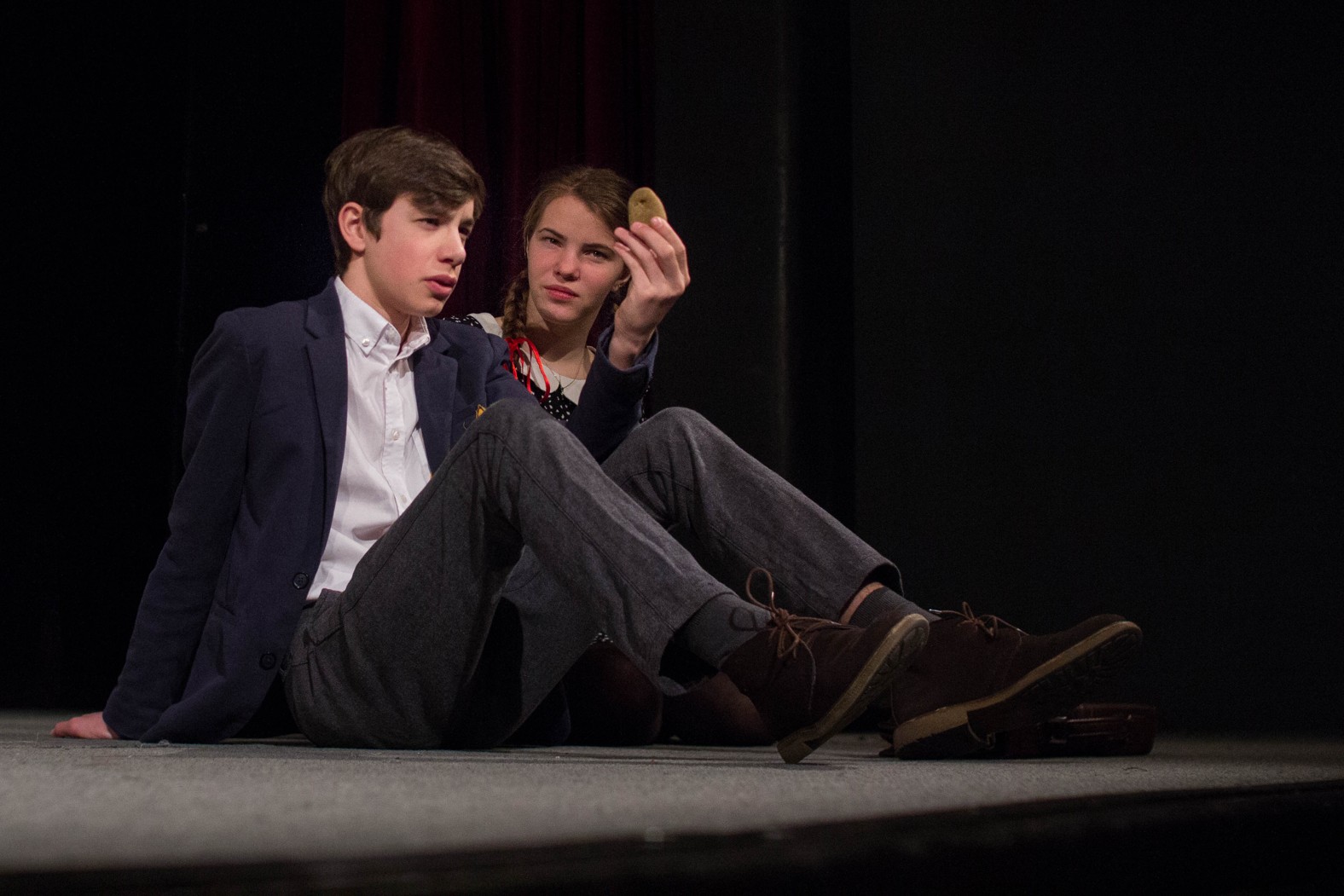Theatrical performance
The Visit from Prehistory
Petr Ginz, 1942
František Tichý, 2019
Theatrical performance based on the book and life story of Petr Ginz, a young artist, writer, and editor-in-chief of the Terezín magazine VEDEM. The play intertwines a fantastical adventure story inspired by Jules Verne with the chilling reality of the life fate of a teenage boy during the time of the Protectorate.
Since February 2022, we have been presenting the performance in a renewed premiere.
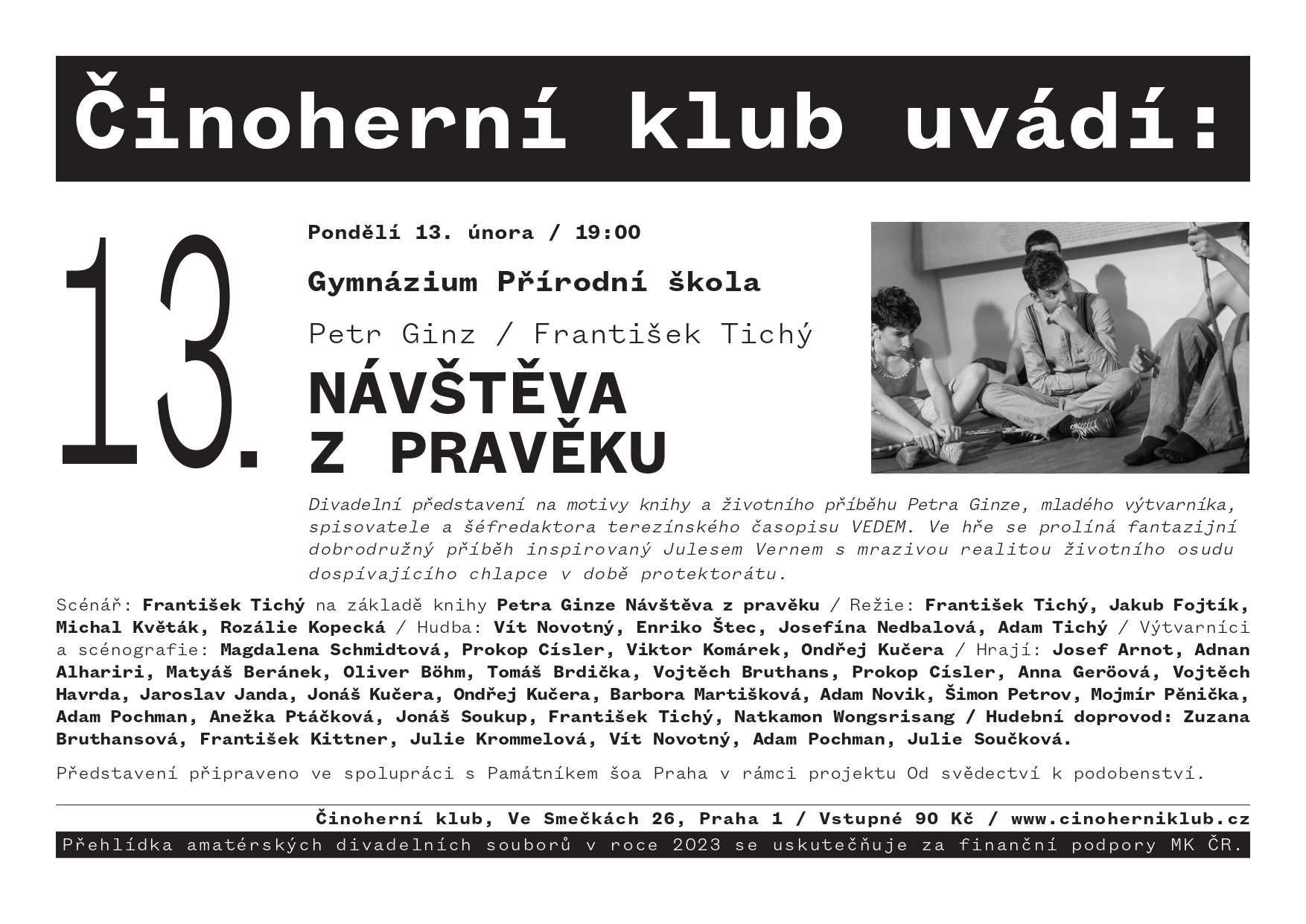
Recording of the theatrical performance from the Prague-Bubny train station
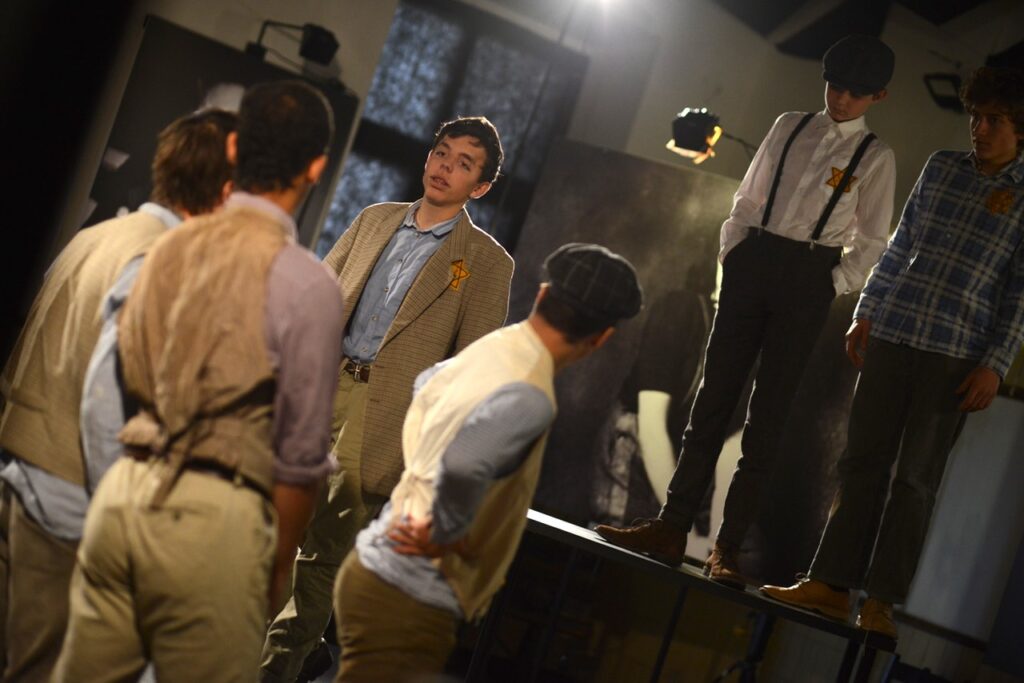
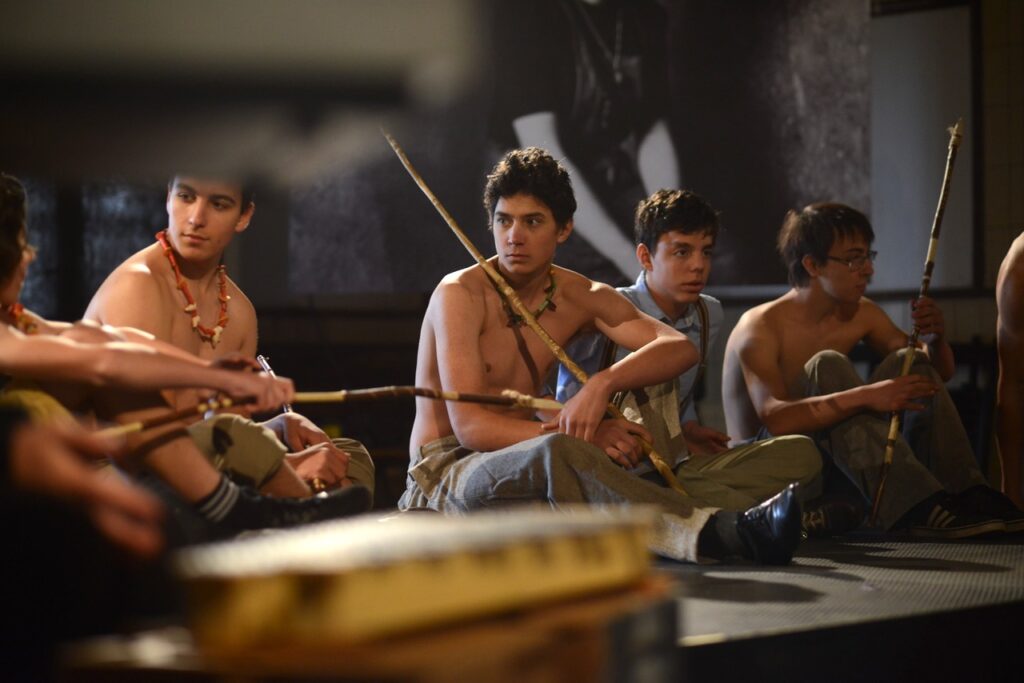
After the COVID-19 break, we rehearsed “Návštěva z pravěku” (The Visit from the Prehistoric Era) with a modified cast of 13-16-year-old actors and actresses. We also expanded the live musical accompaniment.
In the spring, we performed four shows in Prague and one at the Technical University in Liberec. On October 21st and 22nd, 2022, we commemorated the 80th anniversary of Petr’s deportation from Prague to Terezín with three performances at the Prague-Bubny train station.
To mark the 80th anniversary of the first issue of the Vedem magazine, in December 2022, we performed the play directly in Terezín at the L417 building (now the Ghetto Museum), where the magazine was published during the time of the Second World War in the Terezín ghetto.
- Czech Television Report – News from the Performance at Bubny Train Station / October 2022
- Reflection on the renewed premiere of the performance in Divadelní noviny (Theatre News) / October 2022
“I can’t express how deeply the play affects me. It’s as if one authentically and intimately realizes the depth of Petr’s thoughts, their immense humanity, engagement, sensitivity, and capacity for empathy…”
Michaela Vidláková, a witness of the Terezín ghetto, in the magazine Terezínská iniciativa – April 2019
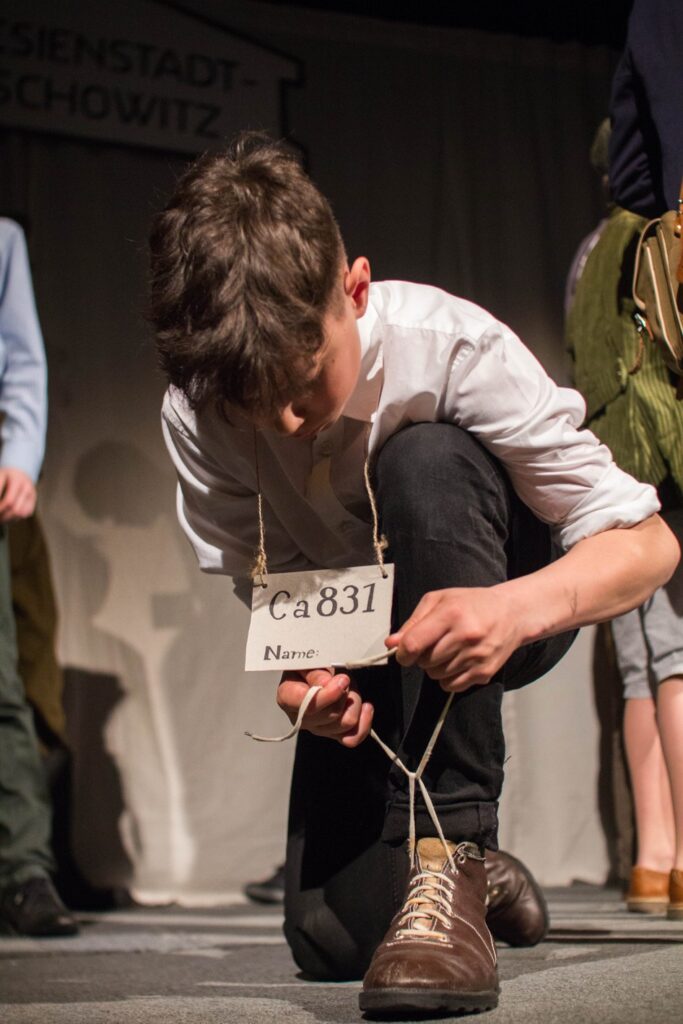
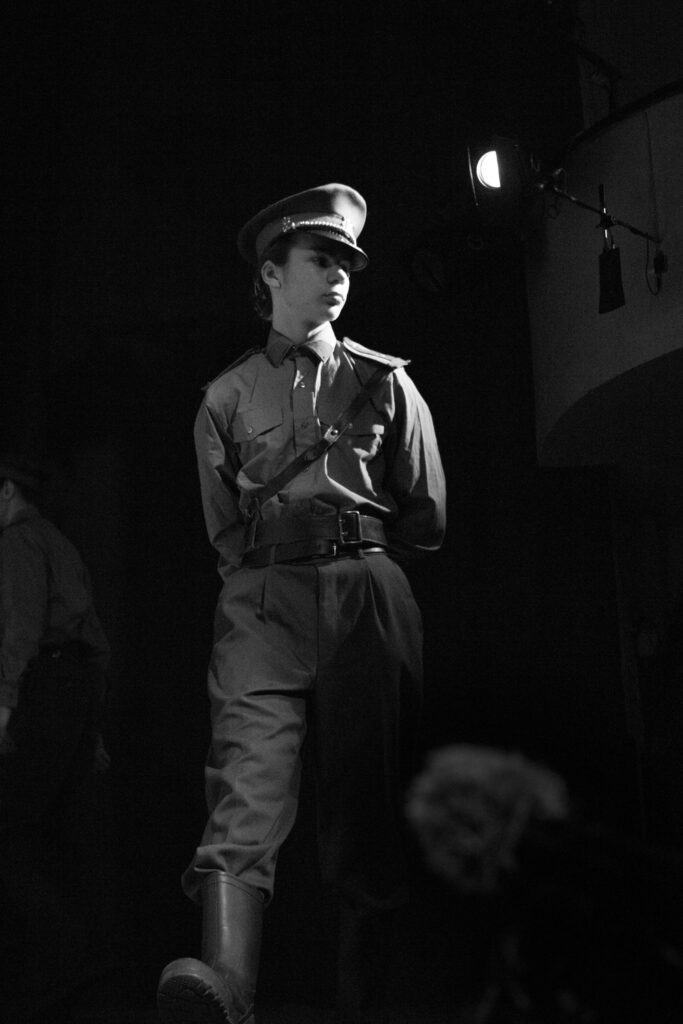
- Screenplay: František Tichý based on the book “Návštěva z pravěku” by Petr Ginz.
- Directors: František Tichý, Jakub Fojtík, Michal Květák, Rozálie Kopecká.
- Music: Enriko Štec, Vít Novotný, Josefína Nedbalová, Adam Tichý, Adam Pochman, Mikoláš Pešek.
- Artists and set design: Magdalena Schmidtová, Prokop Císler, Viktor Komárek, Ondřej Kučera.
Petr Ginz
Petr Ginz (February 1, 1928 – September 28, 1944) was born in Prague into a mixed Jewish-Christian family. From an early age, he displayed many talents. He drew and painted, had an interest in history and natural sciences, loved experiments and new technological discoveries, but above all, he read and wrote. At the Jewish school on Jáchymová Street, he published a magazine called Rozhled and became the class representative.
In October 1942, he was deported to the Terezín ghetto, where he was placed in Boys’ Home 1 under the leadership of Prof. Valtr Eisinger (whom the boys called “Prcek” and addressed informally). It was there that he began publishing the now internationally renowned magazine Vedem with the help of Kurt Kotouč. In Vedem, the boys documented not only the daily reality of the ghetto but also life in the home, writing their thoughts, poems, and stories. In Terezín, Petr also created dozens of drawings and paintings and actively participated in the work of the boys’ self-government in the home.
In September 1944, Petr, along with most of his friends, was included in a transport to Auschwitz-Birkenau, where he was shortly thereafter murdered in a gas chamber.
His younger sister Eva and both parents survived the war and eventually immigrated to Israel, where Eva (now known as the Israeli artist Chava Presburger) still lives today.
Petr’s story and legacy gained worldwide attention when his artwork “Moon Landscape” was taken on board the Space Shuttle Columbia by the first Israeli astronaut, Ilan Ramon.
The Visit from the Prehistoric Era
That’s how Petr named his first completed novel. He wrote it while still in Prague at the age of 13. With his story, he wanted to pay tribute to his favorite author, Jules Verne. The book begins with the tale of discovering a forgotten manuscript by this French author, and Petr maintains Verne’s style and archaic language throughout the writing.
However, Petr was writing during the time of the Protectorate, amidst the escalating anti-Jewish measures and the looming threat of transports into the unknown. He weaves universal questions of good and evil, discrimination, and solidarity among good people into the story set in 19th-century Belgian Congo. Ultimately, these themes triumph over all the darkness.
Petr intended to revisit the book in Terezín, but fate was unforgiving and moved faster. According to his notes, the manuscript was completed by Eva, who also prepared it for publication 15 years ago.
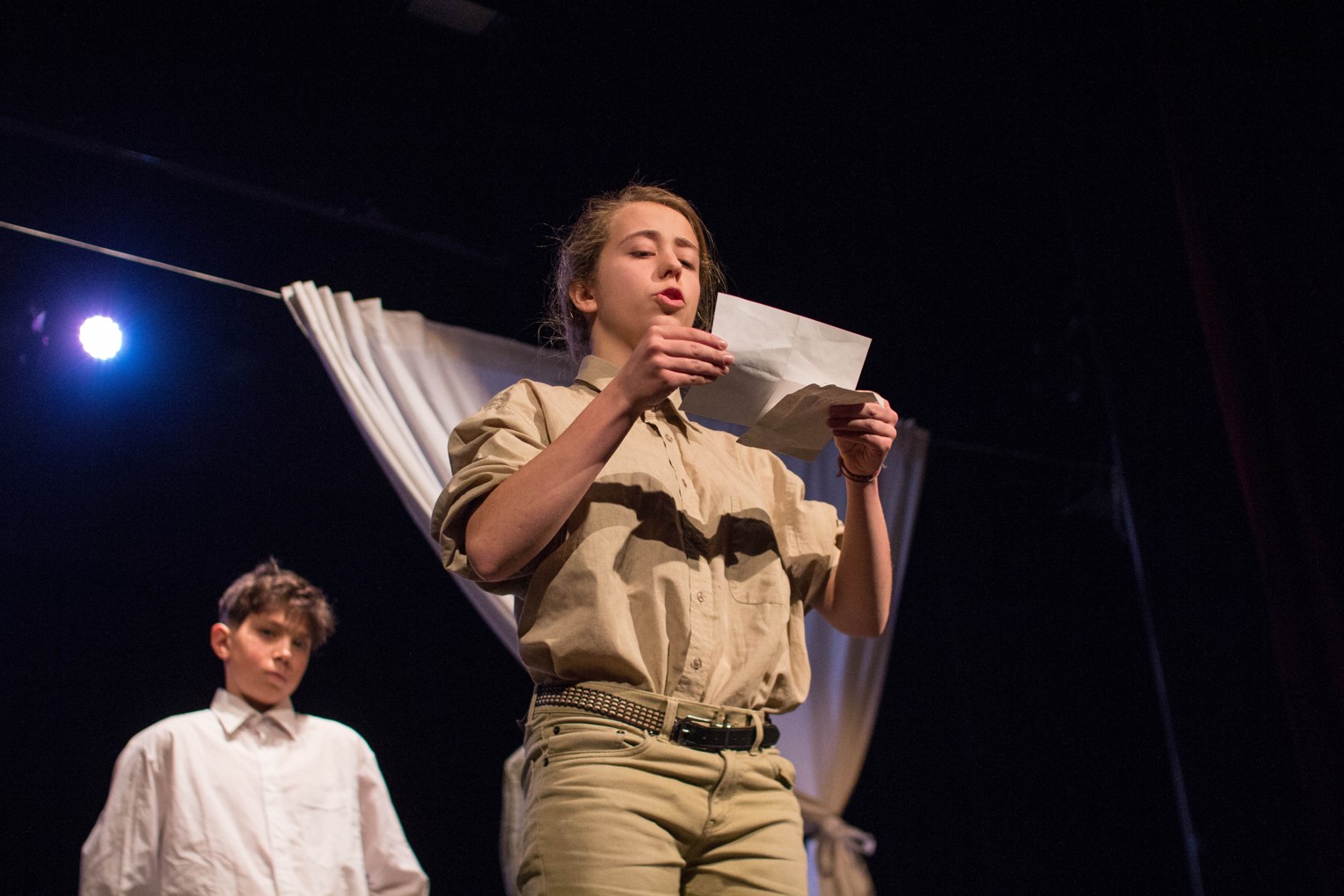
Gymnázium Přírodní škola (Natural School Grammar School) and Petr Ginz
The magazine Vedem and the life and work of Petr Ginz played a crucial role in the inception of the Terezín Lagacy project. It has long surpassed the framework of the Natural School and has engaged hundreds of young people across the Czech Republic. This engagement has been achieved not only through two editions of the Terezín Relay competition, the CD of musical adaptations of Terezín texts titled “Words Echoing from Beyond the Walls,” the theatrical play “Terezín Bells,” and a series of workshops for schools in collaboration with the Jewish Museum in Prague. It has also been accomplished through the publication of books such as “The Prince with the Yellow Star,” “Right Next to White Clouds,” and “Transport for Eternity.”
The play “Journey to the Prehistoric Era” aims to bring Petr’s eponymous book and his unique life story to the stage in a way that does not merely frighten but pays tribute to the strength of spirit and the determination to remain true to oneself even in difficult times.
The roles in the play were undertaken by students from the Natural School across all grades, who dedicated their free time to its preparation since the autumn of 2018. The music and artistic design were created under the guidance of experienced educators during an artistic retreat at Vesmír in January 2019.
The premiere of the performance took place with the financial support of the U.S. Embassy in Prague, in collaboration with the University of Wisconsin-Madison and the Salesian Theatre.
Reactions
I became acquainted with Petr Ginz’s story years ago when I was writing a book about education in Terezín. Therefore, the theatrical performance of “Journey to the Prehistoric Era” deeply resonated with me as it vividly portrayed the challenging lives of children in Terezín and their symbolic struggle against evil personified by the doctor. Considering the current events in Ukraine, this connection is even more chilling. I am very grateful that the students from the Natural School came to our university in Liberec and performed this impressive and artistically rich play, accompanied by music, for our students from the Faculty of Education, who are future teachers. The proceeds from the performance were dedicated to assisting Ukraine, and I greatly appreciate that gesture.
doc. PhDr. Dana Kasperová, Ph.D., author of the book “Education and Upbringing of Jewish Children in the Protectorate and in the Terezín Ghetto” and pedagogue at the University of Liberec
In the production of “Návštěva z pravěku,” the students and their pedagogue, F. Tichý, managed to strikingly connect the fictional novel by Petr Ginz with his real-life story. The resemblance between the two narratives is chilling, with the fictional one seeming like a foreshadowing of the real one. This parallel exists between the creation and life of one of the most well-known child victims of the Holocaust, and the creators astutely utilized it. The production provides young audiences with a fairly detailed introduction to the dark reality of the Protectorate, the inhumanity of Nazism, the persecution of the so-called “non-Aryan” population, and their gradual confinement behind ghetto walls, followed by transports to the unknown east. However, even in this dark reality, the light of Petr’s friendly personality, his young life, and his unwavering desire to live and create, shines through. These factors and the connection with Petr’s adventurous novel, “Návštěva z pravěku,” make the production more digestible. Despite the tragic fate of most of the characters, the audience does not leave the theater crushed. They leave convinced of the infinity of the soul, its absolute freedom, which is not restrained by ghetto walls. Petr Ginz’s story is a clear testament to this. Petr is both a witness and a victim of one of the greatest failures in human history, which must never be repeated. It is primarily for this reason that his story needs to be passed on to future generations, who will one day shape the future of human civilization.
Matouš Danzer, dramaturge, Lampion Theatre, Kladno.

